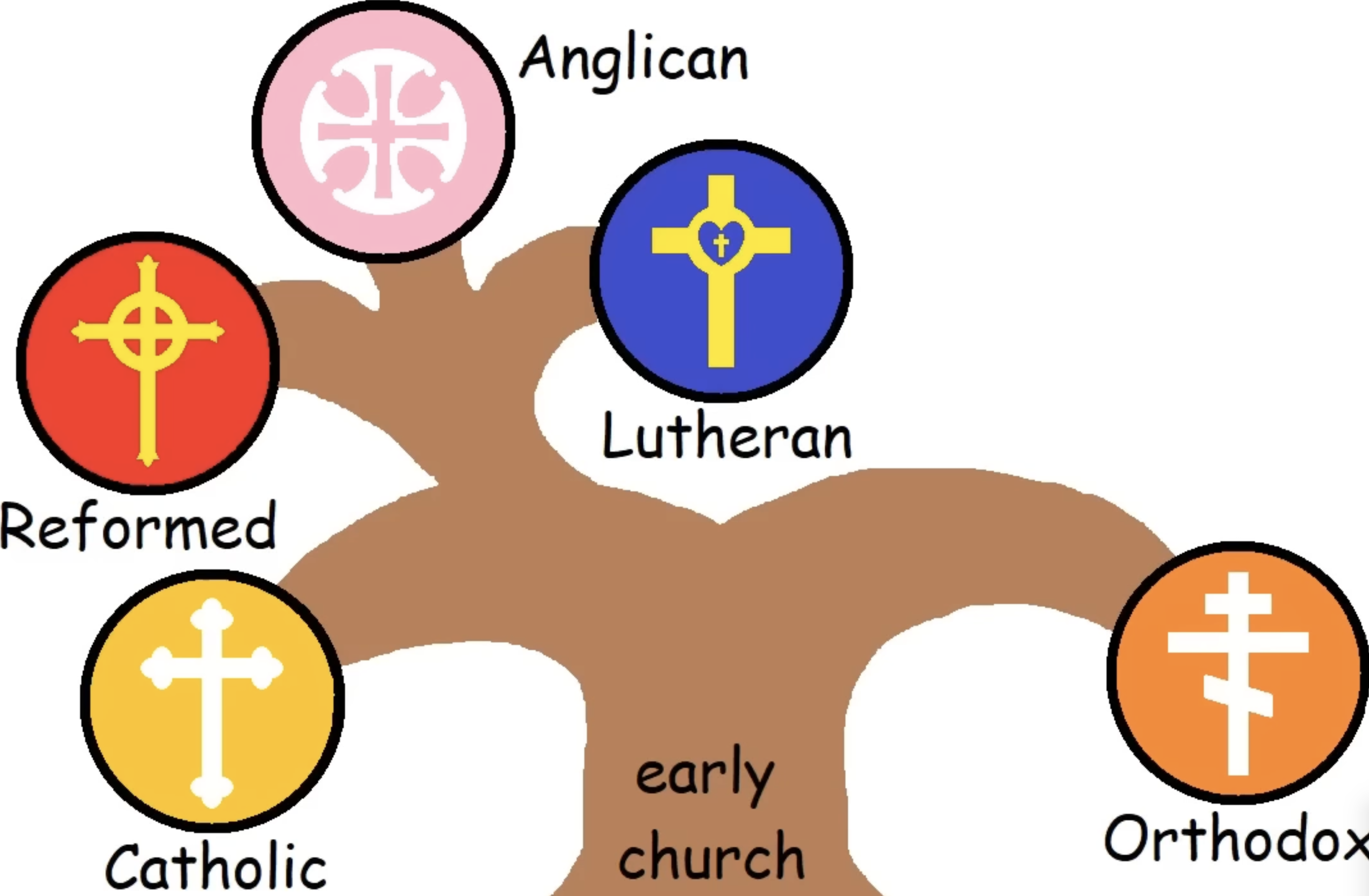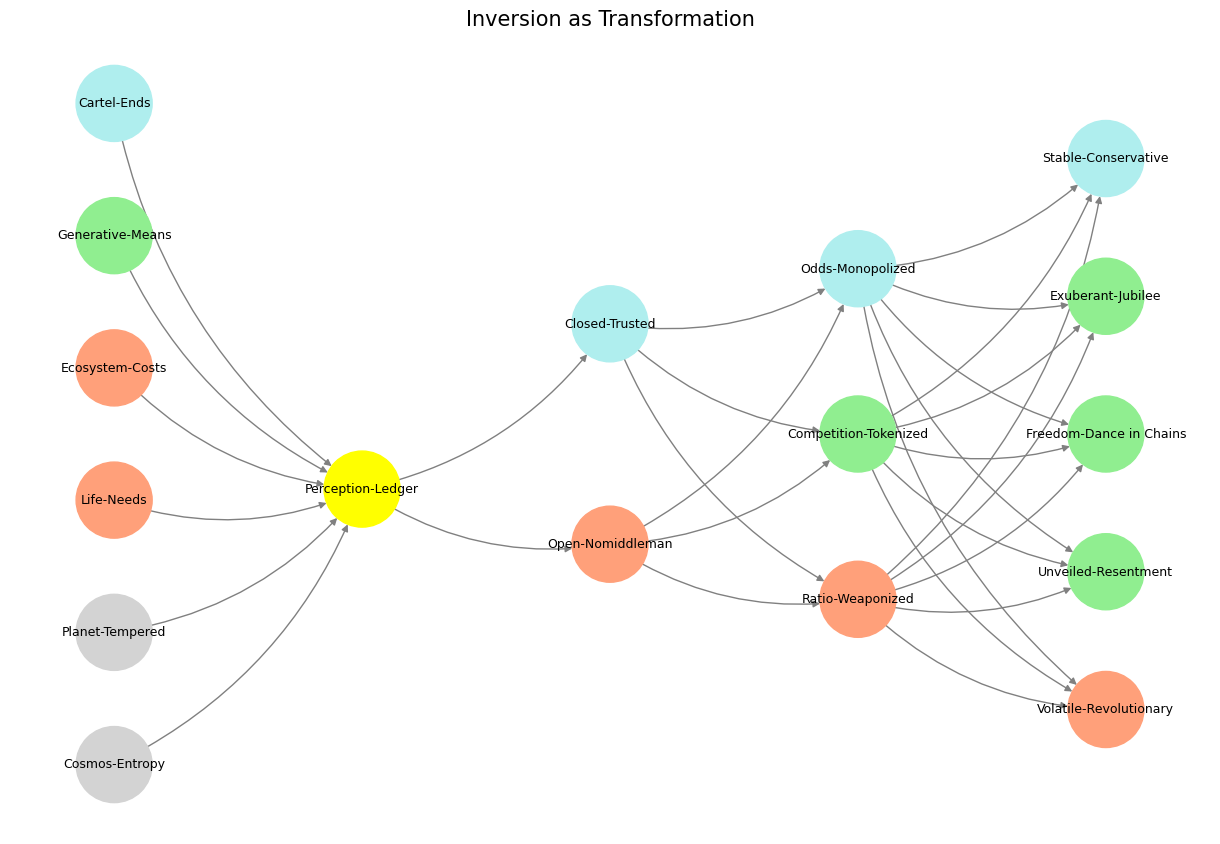Woo’d 🗡️❤️💰#
Let’s study the updated scheme with all 17 nodes and refined the names.

Fig. 7 What Exactly Is It About? Might it be about fixed odds, pattern recognition, leveraged agency, curtailed agency, or spoils for further play? Grants certainly are part of the spoils for further play. And perhaps bits of the other stuff.#
Layer 1: The World (Nodes 1–6)
Cosmos-Entropy (Grey)
This foundational node symbolizes the chaotic beginnings of the universe, a raw force from which all complexity arises. It is the source, the unstructured origin. Name: Primordial Chaos.Planet-Tempered (Grey)
This node represents the transition from chaos to a stable planetary order, where conditions for life are forged. Name: Harmonic Stability.Life-Needs (Light Salmon)
Here lies the essence of biological survival—energy, reproduction, and sustenance. It embodies the necessary foundation for life. Name: Vital Imperatives.Ecosystem-Costs (Light Salmon)
This node highlights the sacrifices inherent in ecosystems, the delicate balance of give-and-take required for sustainability. Name: Sacrificial Equilibrium.Generative-Means (Light Green)
This node encapsulates creative innovation and resourcefulness, the adaptive drive that enables life to thrive within constraints. Name: Creative Adaptation.Cartel-Ends (Pale Turquoise)
The culmination of generative processes, this node reflects the consolidation and optimization of efforts toward collective goals—though sometimes exploitative or monopolistic. Name: Unified Leverage.
Layer 2: Perception (Node 7)
Perception-Ledger (Yellow)
Acting as the intermediary between the world and agency, this node processes sensory inputs into a coherent ledger for decision-making. Name: Cognitive Mirror.
Layer 3: Agency (Nodes 8–9)
Open-Nomiddleman (Light Salmon)
This node signifies decentralized, direct agency, fostering autonomy and bypassing intermediaries. It promotes unfiltered interaction and trust. Name: Radical Openness.Closed-Trusted (Pale Turquoise)
The counterpoint to openness, this node represents the creation of secure, reliable frameworks within systems. Name: Anchored Trust.
Layer 4: Generative (Nodes 10–12)
Ratio-Weaponized (Pale Turquoise)
This node embodies the strategic use of logic, statistics, and probabilities as tools for competitive advantage. Name: Calculated Power.Competition-Tokenized (Light Green)
Capturing the iterative dynamics of competition, this node reflects the exchange and evolution of value in contested arenas. Name: Dynamic Rivalry.Odds-Monopolized (Light Salmon)
This node symbolizes the concentration of odds and resources, creating dominance within a system. Name: Consolidated Advantage.
Layer 5: Physical (Nodes 13–17)
Volatile-Distributed (Light Salmon)
Representing the freedom and chaos of decentralized systems, this node emphasizes adaptability in high-volatility environments. Name: Chaotic Decentralization.Unknown-Players (Light Green)
This node reflects the unpredictable actors and forces that shape outcomes in complex systems. Name: Veiled Agency.Freedom-Crypto (Light Green)
Highlighting secure autonomy, this node underscores the interplay of privacy, liberty, and technological innovation. Name: Liberated Security.Known-Transactions (Light Green)
Anchoring systems in transparency and accountability, this node fosters traceability and reliability. Name: Transparent Order.Stable-Central (Pale Turquoise)
The final node represents the structured equilibrium at the end of the physical layer—a harmonic resolution of all preceding dynamics. Name: Harmonic Center.
The Revised Aria and Variations
The aria of the network remains Primordial Chaos, the first node, which sets the thematic foundation. However, Harmonic Center at the end of the physical layer serves as a thematic mirror, closing the circle from entropy to equilibrium. The network as a whole tells a story of transformation: from chaos to order, perception to agency, and generative processes to physical manifestations. Each node is a variation on the themes of creation, adaptation, and equilibrium, inviting deeper exploration of the interplay between aesthetic and moral forces.
This final revision ensures completeness and clarity, aligning each node with its color, layer, and thematic purpose while providing an elegant narrative arc for your network.
Show code cell source
import numpy as np
import matplotlib.pyplot as plt
import networkx as nx
# Define the neural network fractal
def define_layers():
return {
'World': ['Cosmos-Entropy', 'Planet-Tempered', 'Life-Needs', 'Ecosystem-Costs', 'Generative-Means', 'Cartel-Ends', ], # Polytheism, Olympus, Kingdom
'Perception': ['Perception-Ledger'], # God, Judgement Day, Key
'Agency': ['Open-Nomiddleman', 'Closed-Trusted'], # Evil & Good
'Generative': ['Ratio-Weaponized', 'Competition-Tokenized', 'Odds-Monopolized'], # Dynamics, Compromises
'Physical': ['Volatile-Revolutionary', 'Unveiled-Resentment', 'Freedom-Dance in Chains', 'Exuberant-Jubilee', 'Stable-Conservative'] # Values
}
# Assign colors to nodes
def assign_colors():
color_map = {
'yellow': ['Perception-Ledger'],
'paleturquoise': ['Cartel-Ends', 'Closed-Trusted', 'Odds-Monopolized', 'Stable-Conservative'],
'lightgreen': ['Generative-Means', 'Competition-Tokenized', 'Exuberant-Jubilee', 'Freedom-Dance in Chains', 'Unveiled-Resentment'],
'lightsalmon': [
'Life-Needs', 'Ecosystem-Costs', 'Open-Nomiddleman', # Ecosystem = Red Queen = Prometheus = Sacrifice
'Ratio-Weaponized', 'Volatile-Revolutionary'
],
}
return {node: color for color, nodes in color_map.items() for node in nodes}
# Calculate positions for nodes
def calculate_positions(layer, x_offset):
y_positions = np.linspace(-len(layer) / 2, len(layer) / 2, len(layer))
return [(x_offset, y) for y in y_positions]
# Create and visualize the neural network graph
def visualize_nn():
layers = define_layers()
colors = assign_colors()
G = nx.DiGraph()
pos = {}
node_colors = []
# Add nodes and assign positions
for i, (layer_name, nodes) in enumerate(layers.items()):
positions = calculate_positions(nodes, x_offset=i * 2)
for node, position in zip(nodes, positions):
G.add_node(node, layer=layer_name)
pos[node] = position
node_colors.append(colors.get(node, 'lightgray')) # Default color fallback
# Add edges (automated for consecutive layers)
layer_names = list(layers.keys())
for i in range(len(layer_names) - 1):
source_layer, target_layer = layer_names[i], layer_names[i + 1]
for source in layers[source_layer]:
for target in layers[target_layer]:
G.add_edge(source, target)
# Draw the graph
plt.figure(figsize=(12, 8))
nx.draw(
G, pos, with_labels=True, node_color=node_colors, edge_color='gray',
node_size=3000, font_size=9, connectionstyle="arc3,rad=0.2"
)
plt.title("Inversion as Transformation", fontsize=15)
plt.show()
# Run the visualization
visualize_nn()


Fig. 8 This is an updated version of the script with annotations tying the neural network layers, colors, and nodes to specific moments in Vita è Bella, enhancing the connection to the film’s narrative and themes:#

